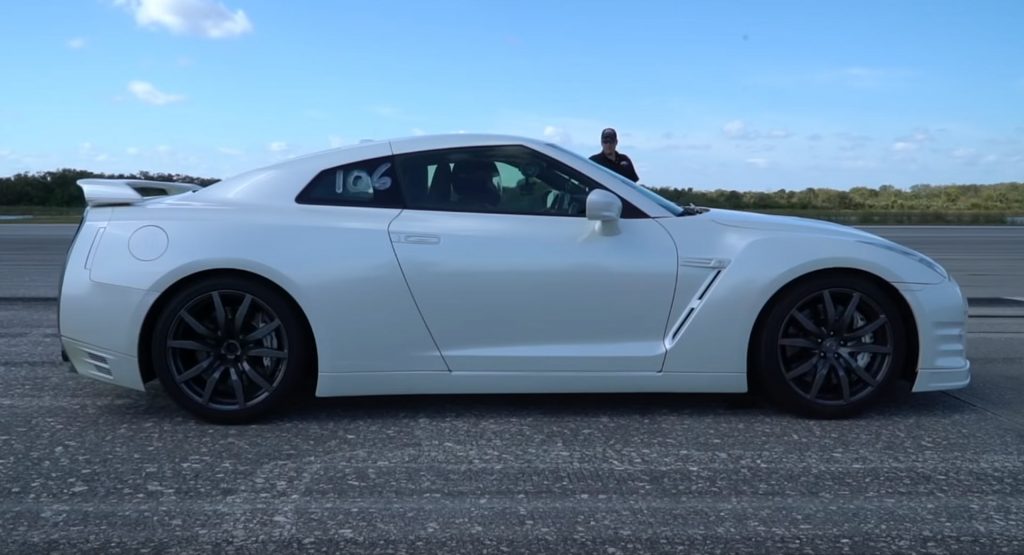Nissan has been building the R35-generation GT-R since December 2007, and by its own admission is still a few years away from replacing it with an all-new model.
At the time of its launch over a decade ago, the GT-R pushed the boundaries of what accessible performance cars could do, and for a long time, was among the quickest accelerating production cars on earth. Fast forward to early 2019, and its performance has been matched and/or exceeded by many new supercars.
However, it has received numerous updates over the years in Nissan’s attempt to keep it relevant and, despite its age, is anything but slow.
What’s more, the venerable twin-turbo V6 has always been ripe for modifications that seriously increased its output. The owner of a tuned 2013 GT-R , which pumps out 620 HP, recently headed to an empty runway to put the Japanese sports car through its paces.
Thanks to its power and advanced all-wheel drive, the car accelerates off the line with impressive vigor and requires just 15 seconds to hit 150 mph (241 km/h). Approximately 20 seconds later, the GT-R tops out 201 mph (323 km/h), 5 mph (8 km/h) faster than the quoted top speed of a bog-standard R35.
Unless you live in a country with de-restricted highways, like Germany, hitting the 200 mph mark in public can put you into serious trouble and endanger both your and other road users’ safety. Consequently, it’s advisable that anyone with a need for speed takes their vehicle to the limit at straight-line events like this or during dedicated track days.



